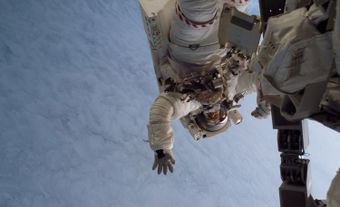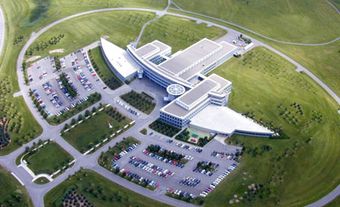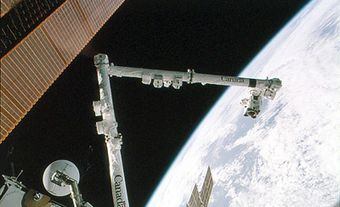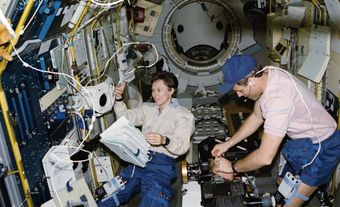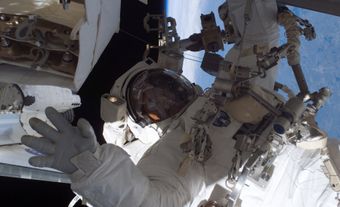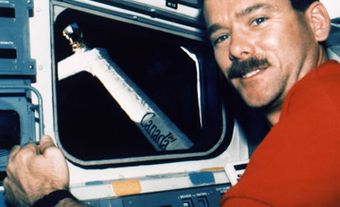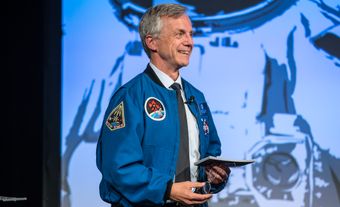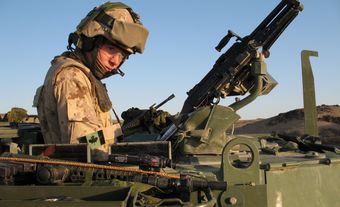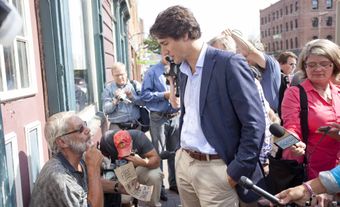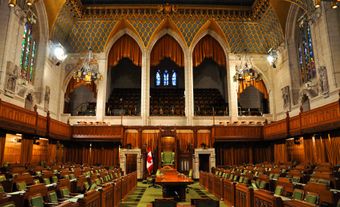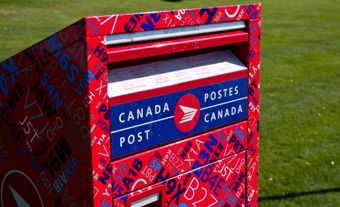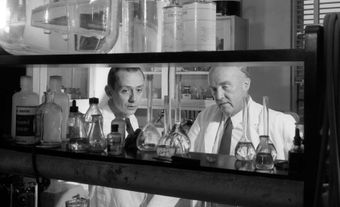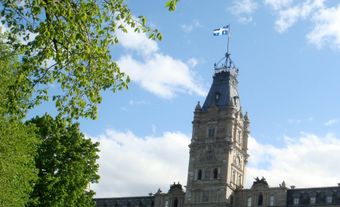Marc Garneau, CC, astronaut, military officer, engineer, politician (born 23 February 1949 in Québec City, QC). Garneau has distinguished himself in three distinct fields. As a naval officer with the Canadian Armed Forces, he spent 10 years as a combat systems engineer. In 1984, Garneau became the first Canadian astronaut to go to space and, from 2001 to 2005, was president of the Canadian Space Agency. As a federal politician, he has served as Liberal house leader, minister of transport and minister of foreign affairs.

Education
Marc Garneau attended primary and secondary schools in Québec City and St-Jean-sur-Richelieu, Quebec. He enrolled in university at the Collège Militaire Royale (CMR) in Saint-Jean and the Royal Military College (RMC) of Kingston, Ontario, where he earned a Bachelor’s of Science in Engineering Physics in 1970. He then studied in London, England, at the Imperial College of Science and Technology, where he received a doctorate in electrical engineering. In 1982–83, Garneau attended the Canadian Forces Command and Staff College in Toronto (see Canadian Armed Forces).
Naval Officer
As a naval officer with the Canadian Forces, Marc Garneau spent 10 years as a combat systems engineer, during which time he designed a simulator for training officers in the use of missile systems aboard Tribal-class destroyers. He also contributed to the development of an aircraft-towed target system for scoring the accuracy of naval gunnery exercises. Garneau was promoted to the rank of commander in 1982 and was transferred to Ottawa, where he became an acknowledged authority in the design of electronic warfare equipment and systems. He was promoted to captain in 1986.
First Canadian in Space
Selected in December 1983 as one of Canada's first group of six astronauts, Marc Garneau was seconded from the Department of National Defence to begin his training in astronautics. A few months later, he was designated as the payload specialist of the STS-41G mission of the American space shuttle Challenger (5–13 October 1984). He trained with back-up astronaut Robert Thirsk for the mission, which included experiments designed by five Canadian researchers. During this mission, Garneau tested, for the first time, the space vision system designed to provide eyes to the Canadarm, the robotic arm of the shuttle.
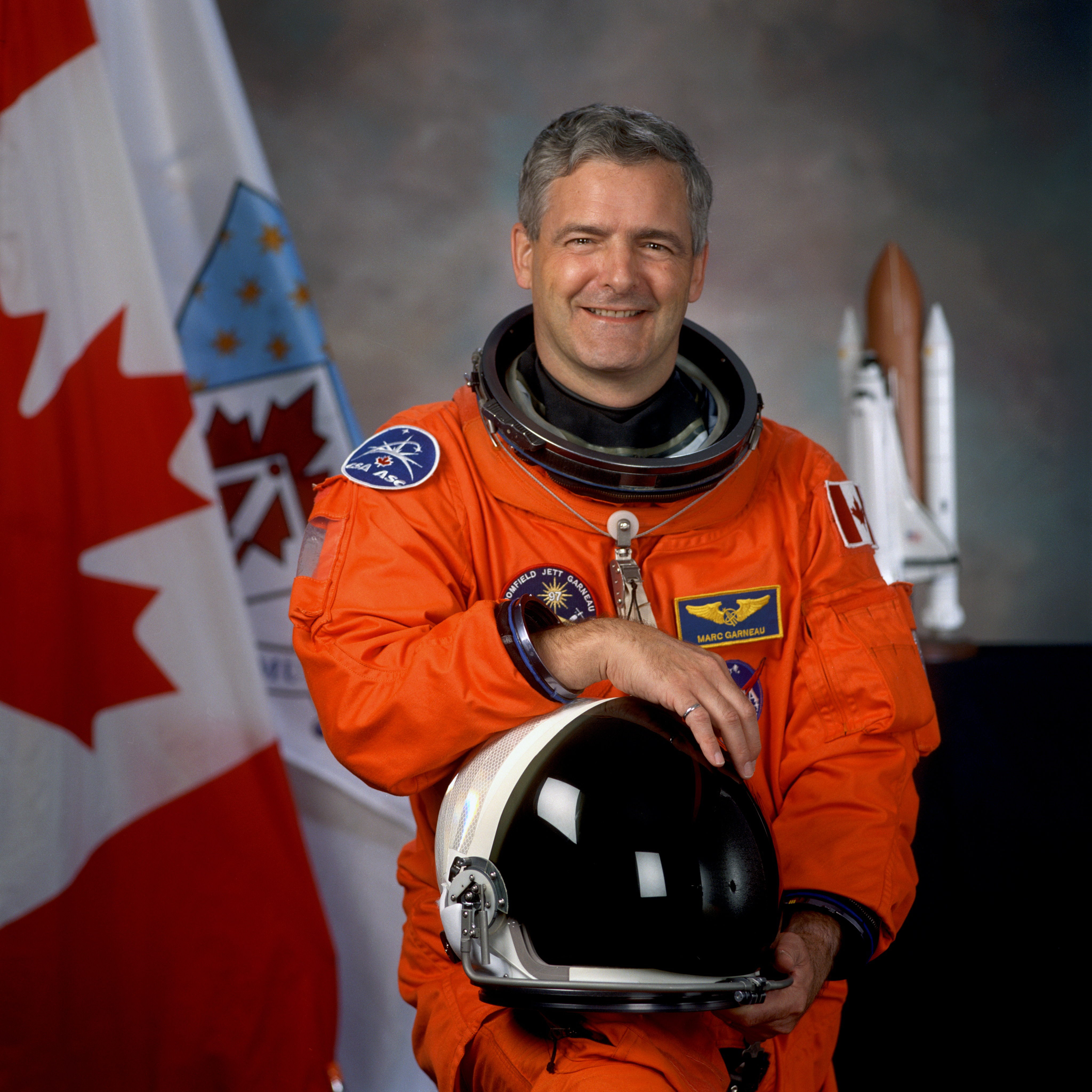
NASA
Marc Garneau left the navy in 1989 to devote himself entirely to his career as an astronaut. He was deputy director of the Canadian Astronaut Program from 1989 to 1992, and in that capacity he provided technical and program support in the preparation of experiments for future Canadian missions. (See also Canadian Space Agency).
In July 1992 he was selected for astronaut training with the US National Aeronautics and Space Administration (NASA) and reported to the Johnson Space Center in Houston, Texas, for mission specialist training. After a year of rigorous training, he was qualified to command the orbiter, including the Canadarm, which is often used to deploy or recover payloads in orbit. He also trained to perform extra-vehicular activities.
While at NASA, Garneau was assigned to CAPCOM (Capsule Communicator) duties, becoming the first non-American to communicate with the shuttle crew from Mission Control. A veteran of three space flights — STS-41G aboard Challenger in 1984, STS-77 on Endeavour in 1996 and STS-97, also on board Endeavour, in 2000 — Garneau logged more than 677 hours in space. During the STS-77 flight, as a mission specialist, he participated in the flight's main experiment, the Commercial Float Zone Furnace, and retrieved the Spartan satellite from orbit using the Canadarm. He also carried out three experiments for Canada's Aquatic Research Facility and two experiments designed by Canadian students. STS-97 was the fourth American mission to build the International Space Station (ISS). One of the mission's purposes was to deliver the first American solar arrays, which involved carrying, and assembling in space, solar panels and batteries.

In February 2001, Garneau was appointed executive vice president of the Canadian Space Agency, and in November of that year, he was appointed president. He resigned from the position, on 28 November 2005, to run for office in the federal election (see Federal Government).
Political Career
In the 2006 federal election, Marc Garneau was the Liberal candidate for Vaudreuil–Soulanges, a constituency in western Quebec, but was defeated by incumbent Meili Faille of the Bloc Québécois. In 2008, Garneau was elected in the Montreal riding of Westmount–Ville-Marie, winning by over 9,000 votes. Garneau became one of the leading members of Michael Ignatieff’s Quebec caucus. In the 2011 election, the Liberals were reduced to 34 seats in the House of Commons, the party’s worst showing ever. Although Ignatieff lost in his riding (and subsequently resigned as party leader), Garneau held onto his seat. He became the Liberal house leader, responsible for his party’s strategies and tactics in the House of Commons.
In 2012, Garneau stepped down as house leader to seek the Liberal leadership. However, he pulled out of the race in March 2013, one month before the leadership convention, saying that he had no chance of beating Justin Trudeau, the eventual winner. Garneau was re-elected to Parliament to represent the constituency of Notre-Dame-de-Grace – Westmount in the 2015 election, in which the Liberals won a majority. Shortly afterward, he was appointed minister of transport in Trudeau’s Cabinet, a position that he held from 4 November 2015 to 11 January 2021. He also served as minister of foreign affairs from 12 January 2021 to 26 October 2021.
On 8 March 2023, after a 15-year political career, Garneau announced his retirement from politics.
Select Honours and Awards
In 2003, Marc Garneau was featured on a postage stamp celebrating Canadian astronauts (see Canada Post Corporation). That same year, he was appointed Chancellor of Carleton University, a role that he held until 2008. In addition to these honours, Garneau has received the following accolades:
- Officer, Order of Canada(1984)
- Exceptional Service Medal, NASA (1997)
- Queen Elizabeth II’s Golden Jubilee Medal (2002)
- Honorary Doctor of Science, York University (2002)
- Companion, Order of Canada (2003)
- Honorary Doctor of Law, Concordia University (2004)
- Honorary Doctor of Science, McMaster University (2005)
- Gold Medal Award, Canadian Council of Professional Engineers (2006)
- Inductee, Canadian Aviation Hall of Fame (2008)
- Queen Elizabeth II’s Diamond Jubilee (2012)

 Share on Facebook
Share on Facebook Share on X
Share on X Share by Email
Share by Email Share on Google Classroom
Share on Google Classroom
